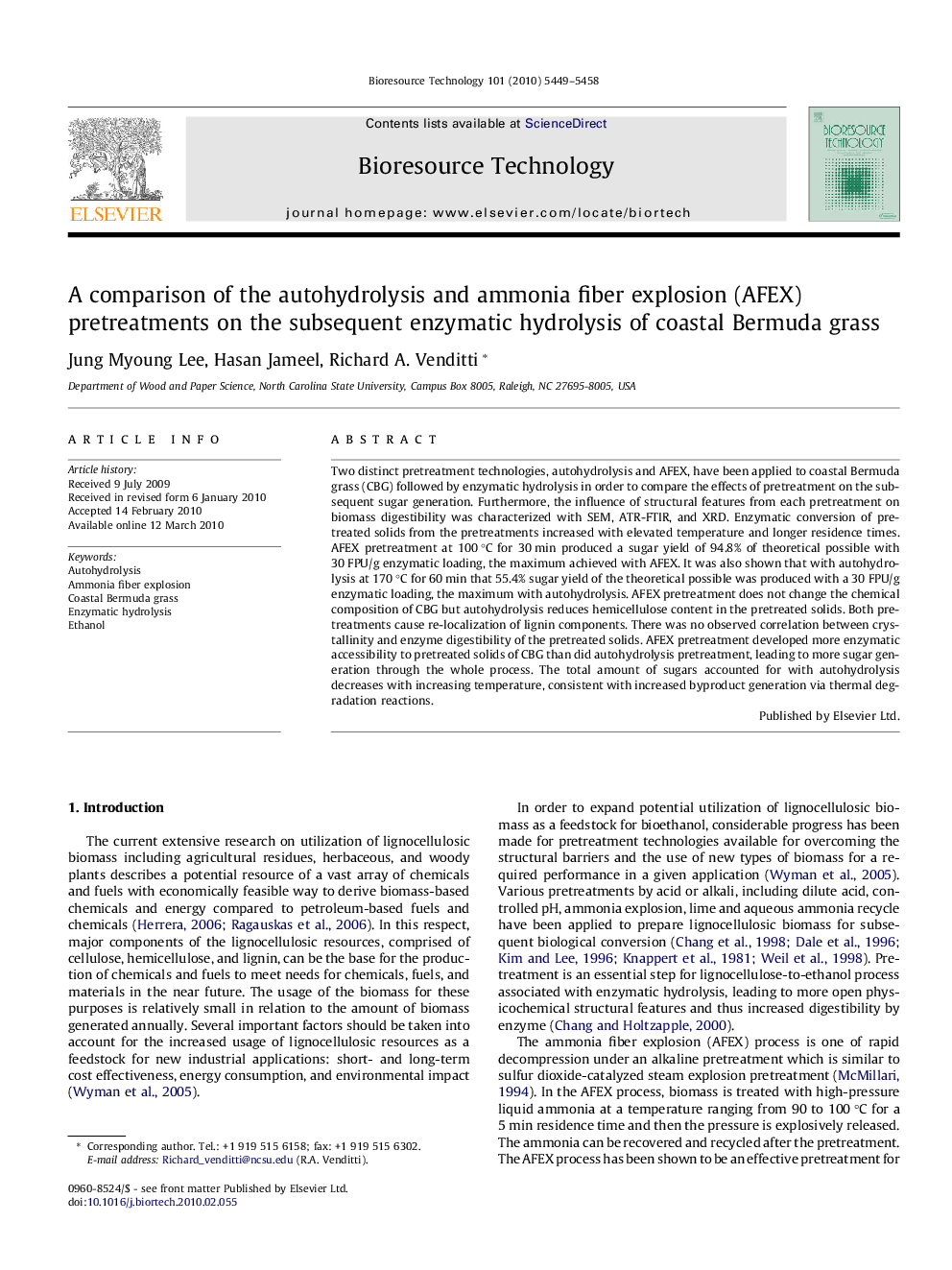| Article ID | Journal | Published Year | Pages | File Type |
|---|---|---|---|---|
| 682977 | Bioresource Technology | 2010 | 10 Pages |
Two distinct pretreatment technologies, autohydrolysis and AFEX, have been applied to coastal Bermuda grass (CBG) followed by enzymatic hydrolysis in order to compare the effects of pretreatment on the subsequent sugar generation. Furthermore, the influence of structural features from each pretreatment on biomass digestibility was characterized with SEM, ATR-FTIR, and XRD. Enzymatic conversion of pretreated solids from the pretreatments increased with elevated temperature and longer residence times. AFEX pretreatment at 100 °C for 30 min produced a sugar yield of 94.8% of theoretical possible with 30 FPU/g enzymatic loading, the maximum achieved with AFEX. It was also shown that with autohydrolysis at 170 °C for 60 min that 55.4% sugar yield of the theoretical possible was produced with a 30 FPU/g enzymatic loading, the maximum with autohydrolysis. AFEX pretreatment does not change the chemical composition of CBG but autohydrolysis reduces hemicellulose content in the pretreated solids. Both pretreatments cause re-localization of lignin components. There was no observed correlation between crystallinity and enzyme digestibility of the pretreated solids. AFEX pretreatment developed more enzymatic accessibility to pretreated solids of CBG than did autohydrolysis pretreatment, leading to more sugar generation through the whole process. The total amount of sugars accounted for with autohydrolysis decreases with increasing temperature, consistent with increased byproduct generation via thermal degradation reactions.
